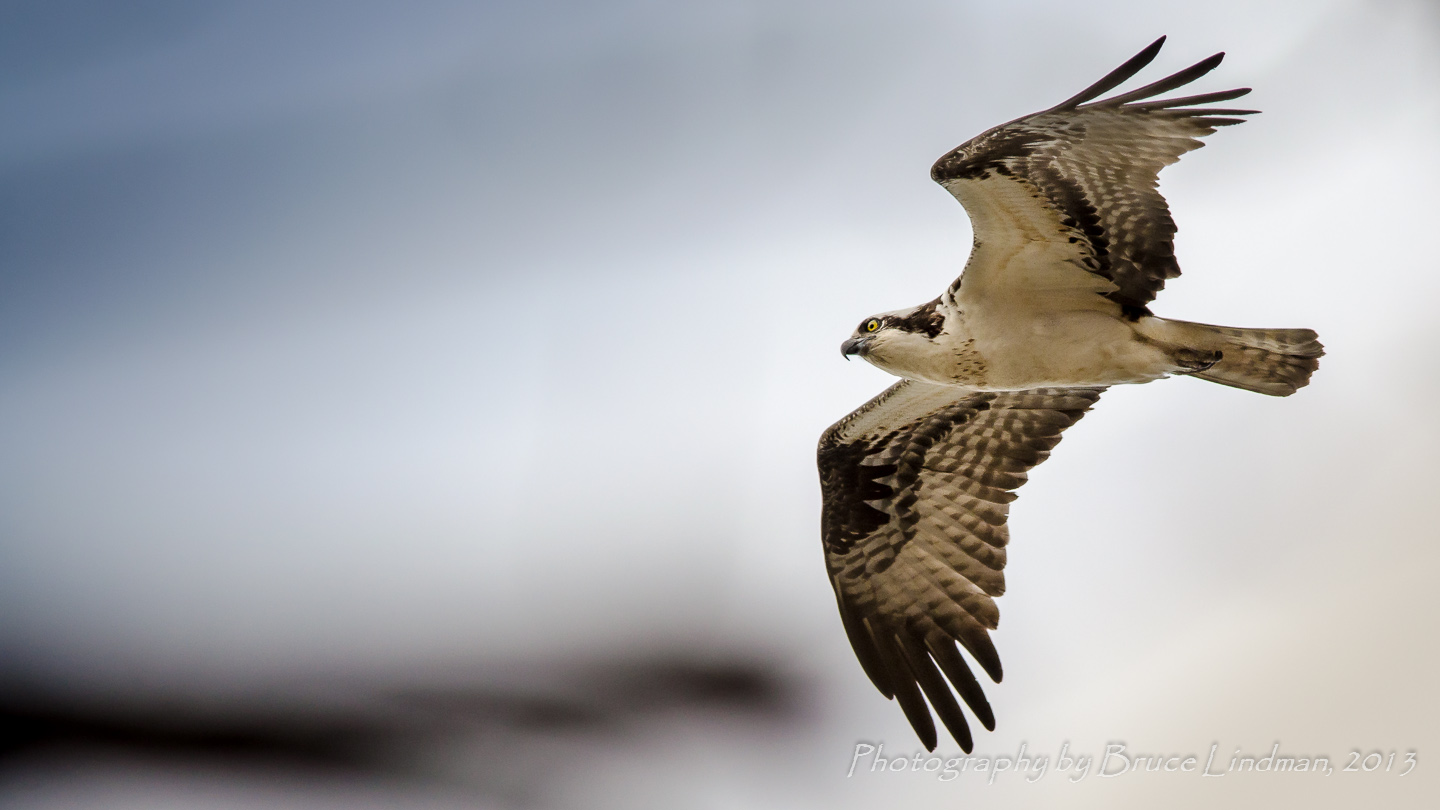 Osprey’s are making a come-back in Ohio, thanks to the efforts of many volunteers augmenting the work of our wildlife agencies.
Osprey’s are making a come-back in Ohio, thanks to the efforts of many volunteers augmenting the work of our wildlife agencies.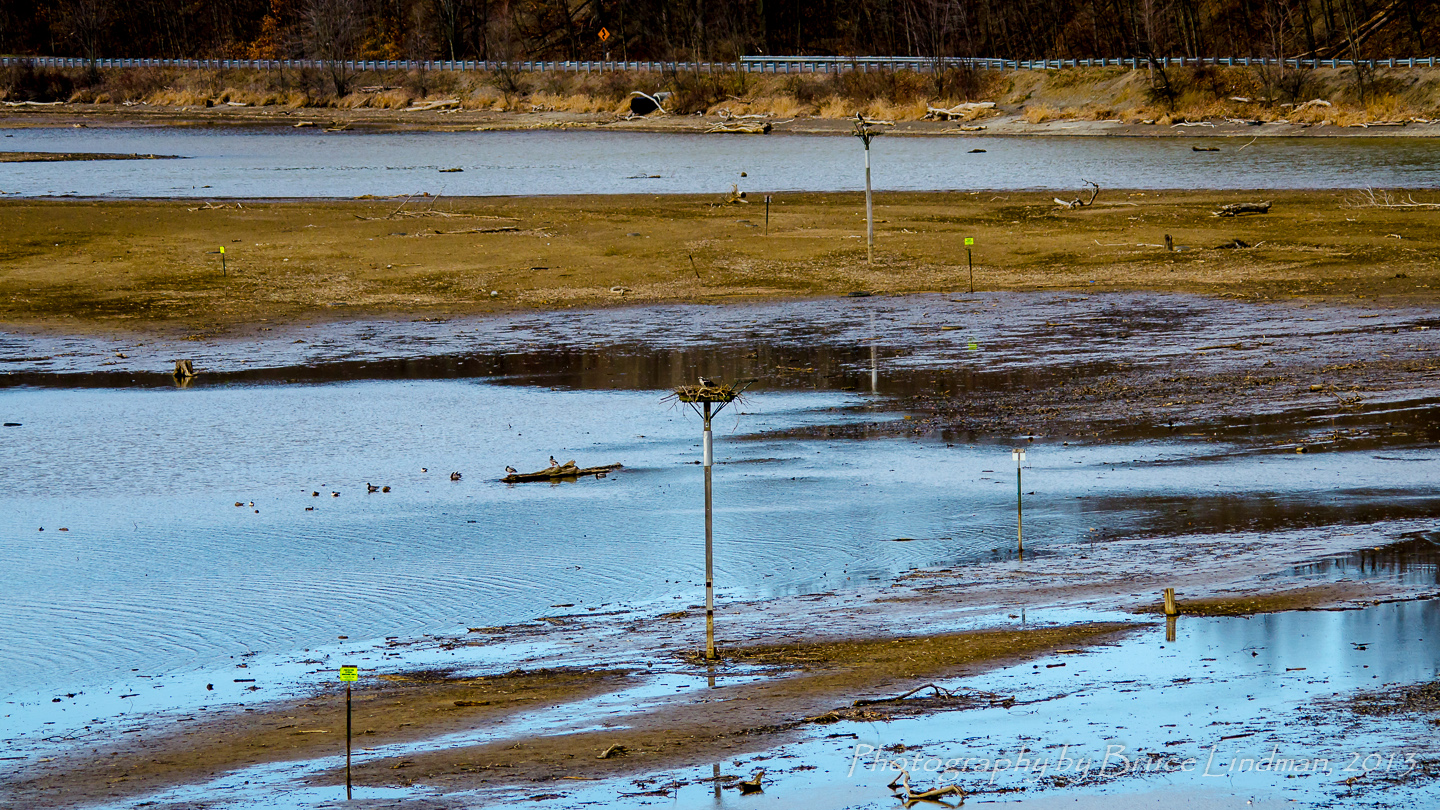 Throughout the Buckeye State, Osprey nesting platforms have been erected in shallow lake beds and wetlands. The platforms are typically placed several hundred feet from the nearest treeline, out of the glide path of predatory Great Horned Owls that might take a chance on a sleeping Osprey or its young. Once established it might take two or three years before an Osprey platform is occupied. Fledgling ospreys take note of the sites during their migration, and may return a few years later when they are ready to breed.
Throughout the Buckeye State, Osprey nesting platforms have been erected in shallow lake beds and wetlands. The platforms are typically placed several hundred feet from the nearest treeline, out of the glide path of predatory Great Horned Owls that might take a chance on a sleeping Osprey or its young. Once established it might take two or three years before an Osprey platform is occupied. Fledgling ospreys take note of the sites during their migration, and may return a few years later when they are ready to breed.
Ospreys mate for life, but the pair only co-habitate for the breeding season. Once the chicks are raised, the adults go their separate ways. Individual birds may hang out in Ohio into mid-fall, but eventually make their way down to Florida or Central America for the winter. The following spring they find each other once more at their established nesting site.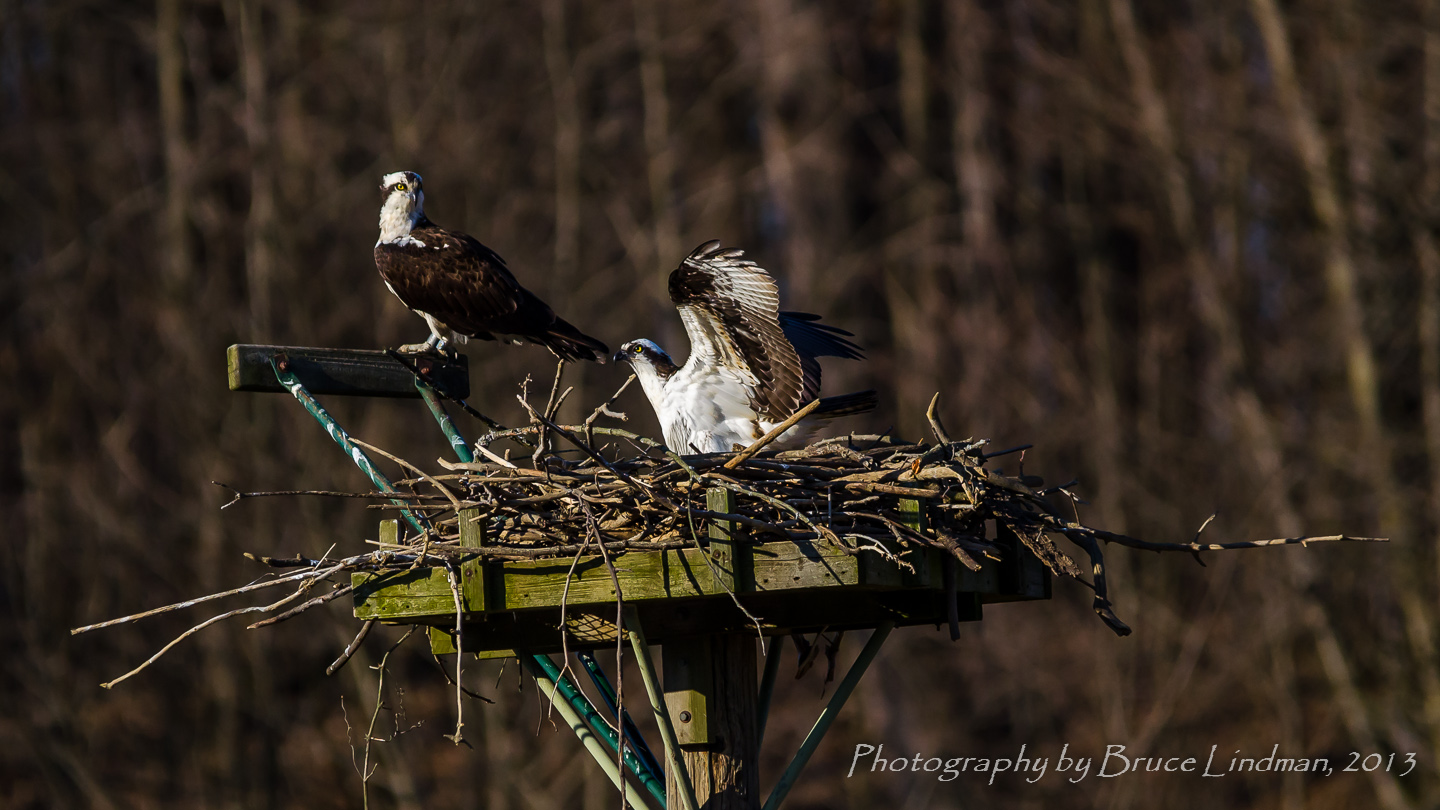
To discourage Canada Geese from taking over the platforms, volunteers clear away the Osprey nests after the season is over. Geese like to use previously established nests, but the Ospreys will build a new one each year.
Click here for more information about Ospreys.
Photography Tips
Ospreys are moderately shy and avoid people, though it is not unusual to see them flying overhead or spot one perched in a tree along a shore. With luck you’ll see one diving for fish or soaring back to its nest with a fresh catch. During the breeding season you can get reliably close to them near their nesting platforms, but stay AT LEAST twice as far away as the posted signs in order to avoid disturbing them. The signs are a guide, not a boundary. If you can read them easily, then you are too close.
The best way to photograph them is to study the behavior of individuals. Ospreys are creatures of habit and frequently return to favorite perches or flight paths. Set up near one of these spots, with camoflauge netting or a bird blind if possible, and your patience may be rewarded with a good shot.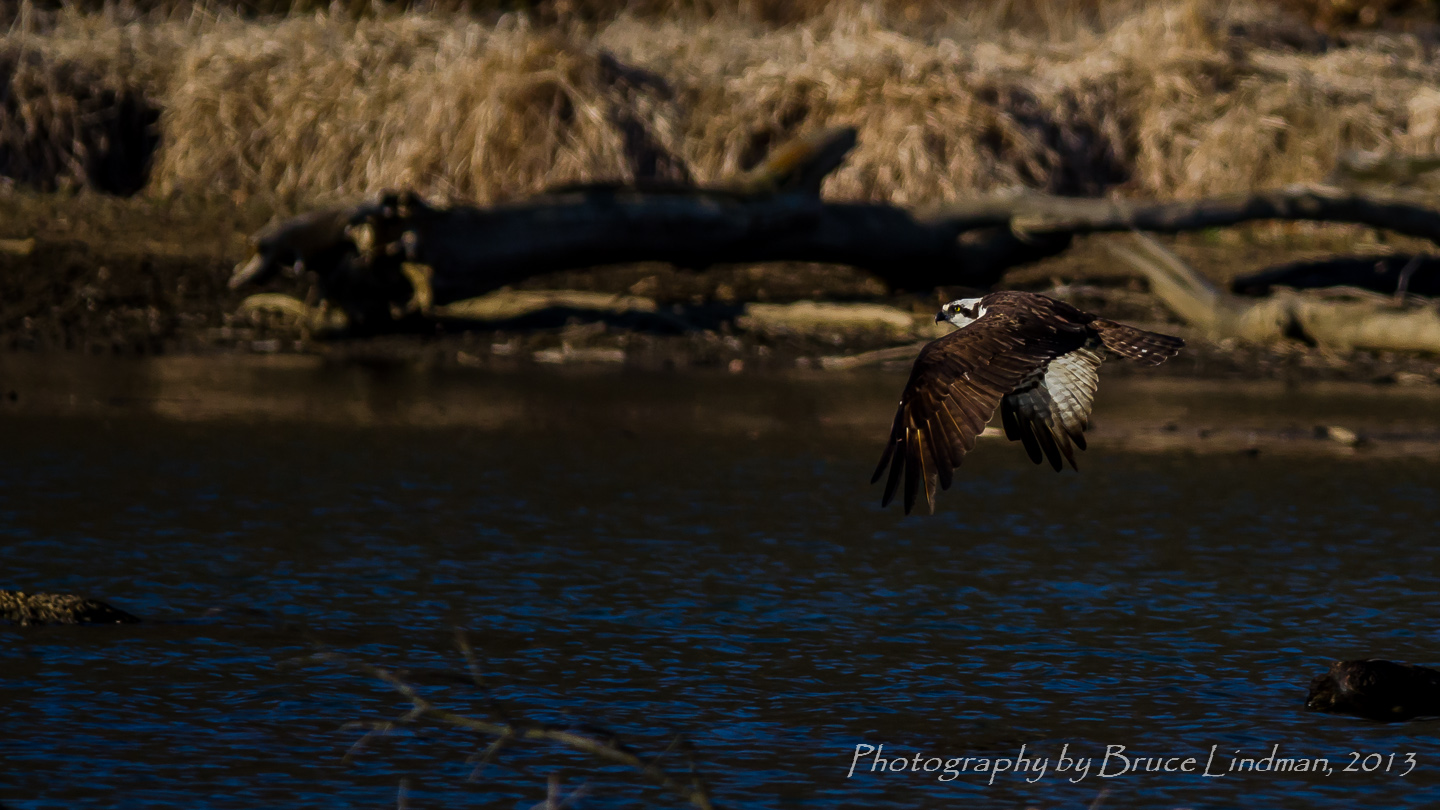
The high contrast of this raptor’s plumage, combined with the fact that you may be shooting against the sky, practically demands the high dynamic range of RAW file format. JPEGs will be unlikely to yield satisfactory images. The Osprey’s flight is deliberate and predictable, making it relatively easy to track them and allowing somewhat slower shutter speeds, but their large size benefits from the depth of field that comes with smaller apertures. 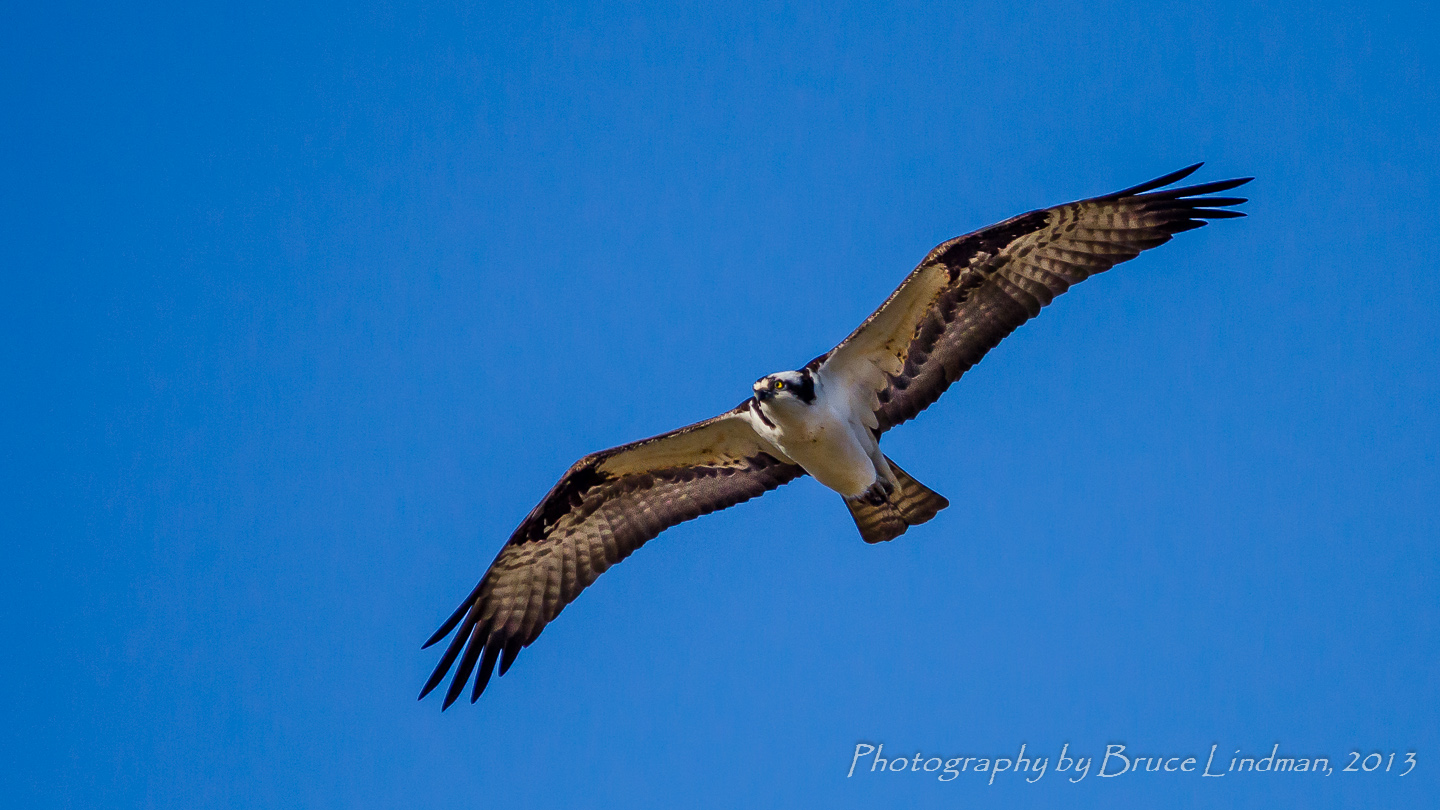
Seasonality
Ospreys can be observed along practically any moderate-to-large body of water from late March through October.
Localities
The north end of Alum Creek, just south of Kilbourne, boasts four closely-spaced Osprey platforms. In 2013, three of the platforms were occupied by nested pairs. Their behavior is easily viewable with binoculars or spotting scopes from pull-offs along HogBack Road, but you’ll need a 500mm lens at least in order to get any good pictures. Early in the year the water level may be lower, allowing a closer approach, but respect the posted warning signs by staying at least twice as far away. In the fall the water level is lower again, but by this time the nests have been abandoned.
The Oxbow Road Boat Launch is a likely spot to observe Osprey during the summer and early fall. This small island in Alum Creek is a popular spot for fishermen of both human and avian kind. Watch for Osprey picking fish out of the water on the North side of the island, and alighting in trees on the western shore to enjoy their meals.
O’Shaughnessy Reservoir is a good place to see Osprey feeding during the spring nest building season, but I seldom see them there later than April.
Gallery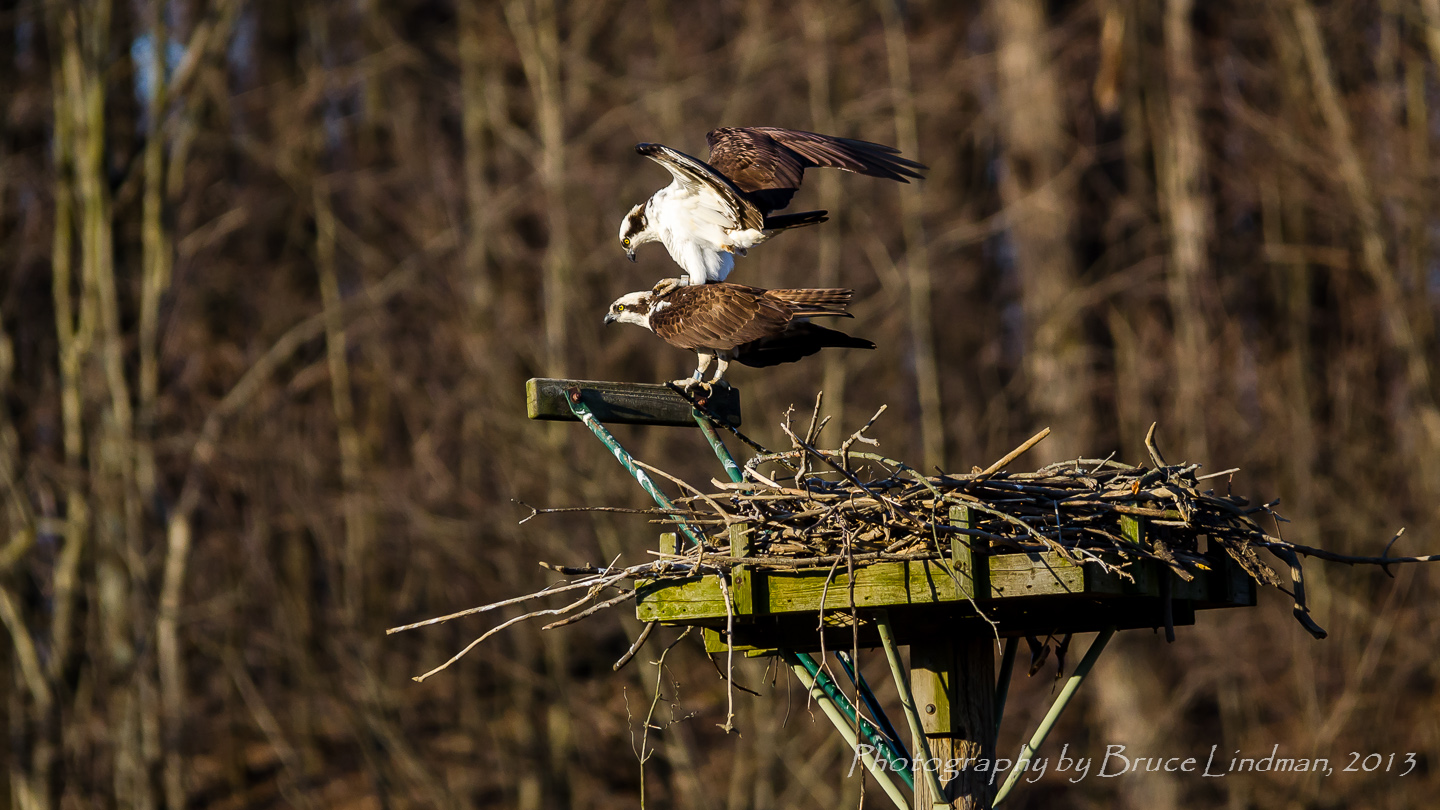
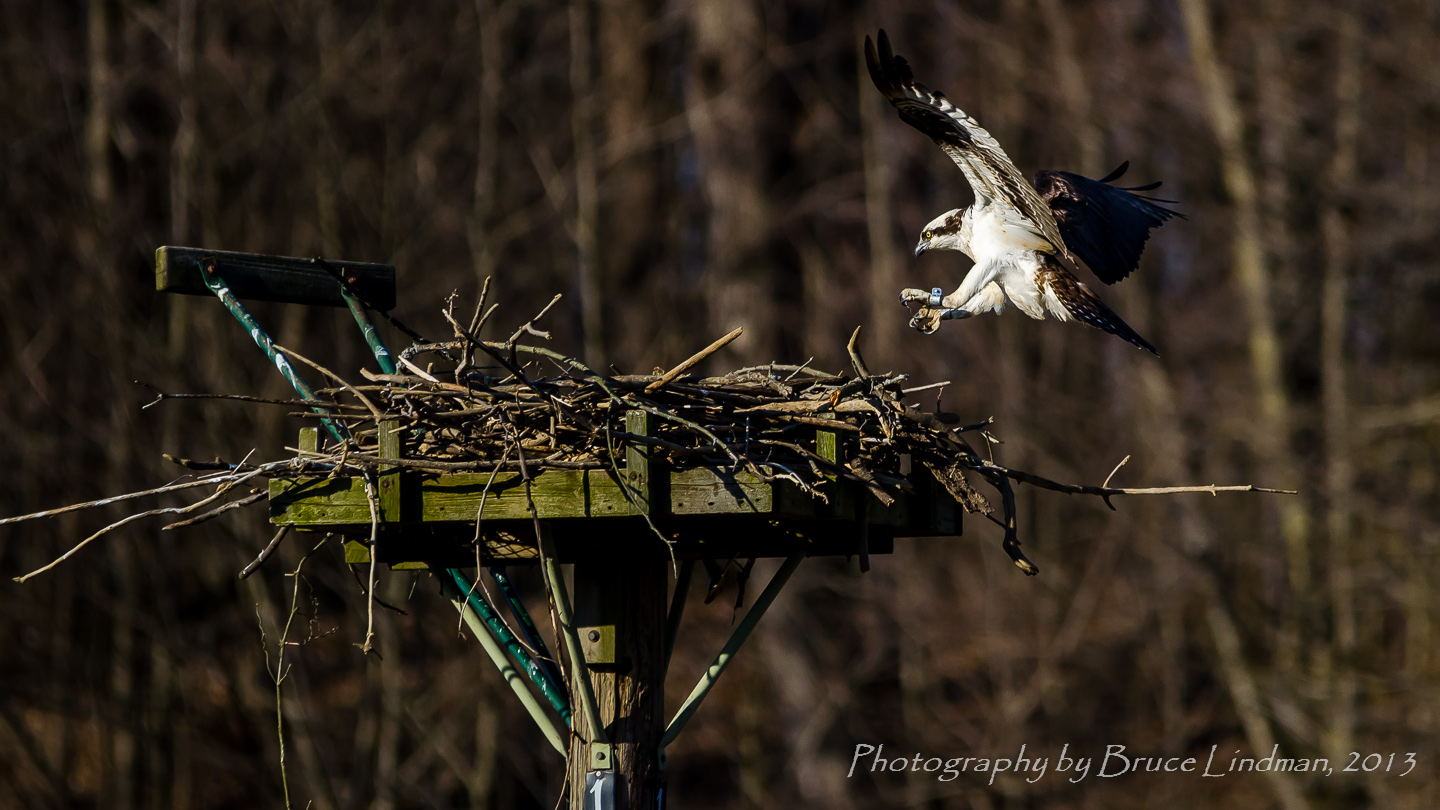
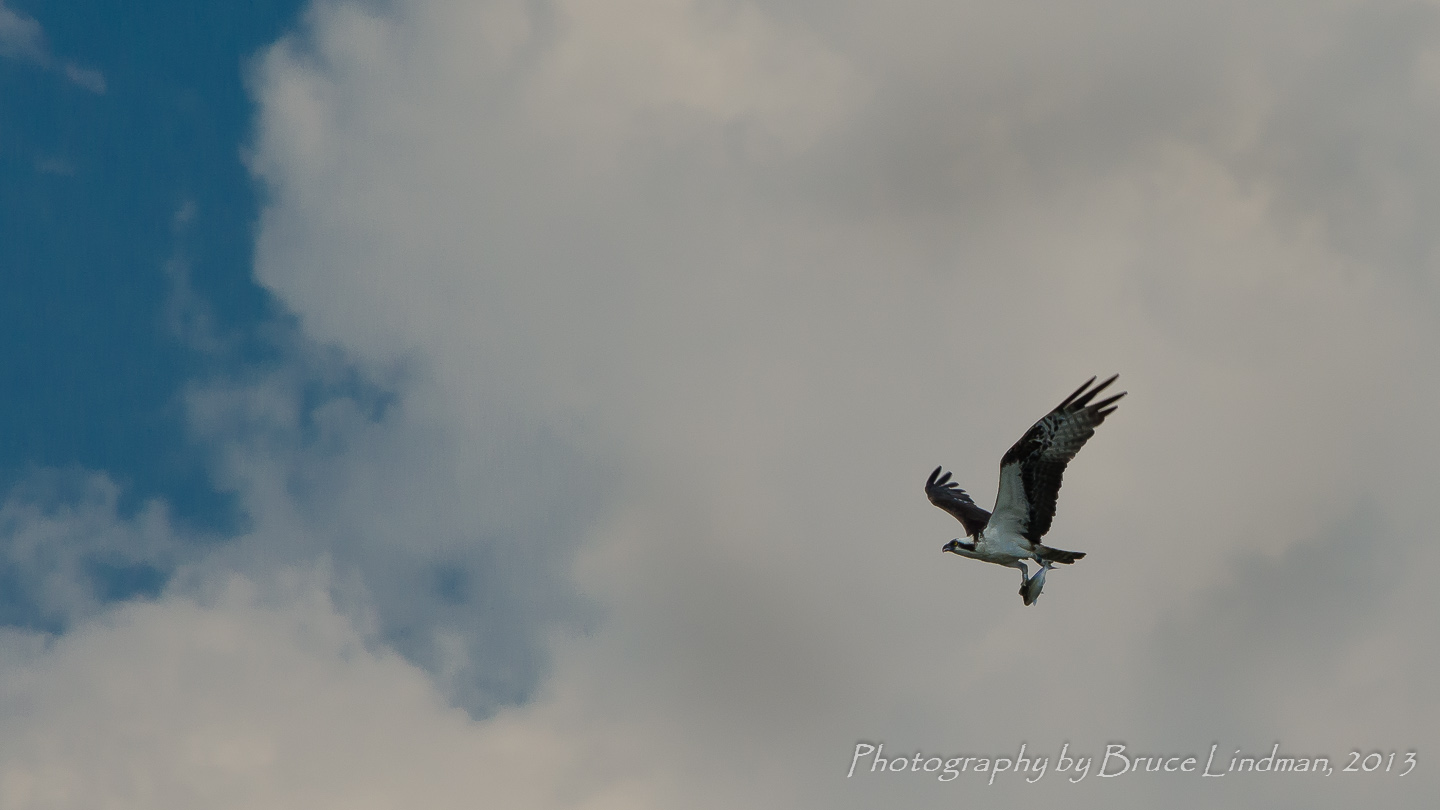

Bruce, you’ve done a nice job here with your photos and I like the natural history info you’ve presented, your reminders to respect the space of the birds and your photography tips. My kind of blog post.
Thanks Ron!
I’ve been inspired by your site, and by the site of a local expert named Jim McCormac. His site is called simply “Ohio Birds and Biodiversity” http://jimmccormac.blogspot.com/.
I’m still having a devil of a time learning WordPress as I go, and I haven’t gotten it to the point where I’m happy with the layout yet, but I’ll be adding more pages and posts in the near future.
Brucehttp://whateverthelight.com/wp-admin/edit-comments.php?p=167&approved=1#comments-form
P.S. For those reading this comment, Ron’s site is http://featheredphotography.com/blog/, and his photos are simply amazing.
Wonderful site. Great pix and text. So happy and appreciative to learn about these efforts in my home state. Was directed here from the live cam site at Audubon’s Hog Island, Maine, osprey nest —
http://explore.org/#!/live-cams/player/live-osprey-cam